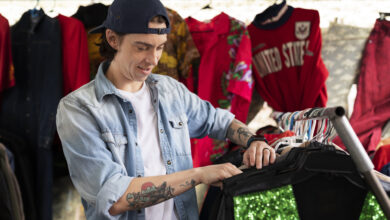Introduction to Levapioli
When people first encounter the word Levapioli, they often pause. It’s not part of common English vocabulary, yet it carries depth, history, and symbolism that intrigue linguists, cultural historians, and even modern thinkers. Much like the way Italians use everyday objects as metaphors for life, Levapioli reflects both tangible craftsmanship and abstract ideas of growth.
As Italian scholar Giorgio Rossi once said, “Every word in our language is a tool some build houses, others build meaning.” Levapioli seems to do both.
Meaning and Origins of Levapioli
The term Levapioli is thought to come from Italian roots “leva” meaning lever or lifting, and “pioli” referring to rungs of a ladder. Together, the phrase can be interpreted as “lifting the rungs”. This imagery makes Levapioli a powerful metaphor for progress, opportunity, and personal growth.
In rural Italian communities, craftsmen and farmers used the term in idiomatic expressions. Imagine a builder removing rungs from a ladder; it could symbolize restricting progress. Conversely, adding rungs meant enabling someone to climb higher. This dual meaning resonates even today, whether in business mentorship, education, or social equity.

Historical Development of Levapioli
Though the word itself is not widely documented in classical texts, the concept behind Levapioli appears in various cultural practices. During the Renaissance, Italian artisans often referred to the pioli of their trade as steps toward mastery. A young apprentice climbing “the rungs” wasn’t just about learning a skill it was about advancing in life.
One anecdote comes from a Florentine workshop where a master carpenter, according to records from the Archivio di Stato di Firenze, told his apprentices: “Each rung you climb is not wood, but wisdom.” This embodies the spirit of Levapioli gradual yet meaningful progress.
Practical Uses of Levapioli
While abstract in meaning, Levapioli also finds practical application:
- Leadership and Mentorship: A manager who provides training or growth paths for their team is essentially practicing Levapioli adding rungs for others to climb.
- Education: Teachers “raise the ladder” for students by giving them knowledge and confidence.
- Personal Development: Goal setting and step-by-step achievements mirror the symbolism of climbing rungs.
For example, a Milan-based startup once used Levapioli as a branding concept in their employee development program. Their CEO explained: “We don’t hand employees the top of the ladder. We give them rungs, one by one.”
Cultural and Social Importance of Levapioli
Culturally, Levapioli is tied to the values of resilience and community support. In Italy, communal work such as olive harvesting often used ladder imagery one person steadying the base while another climbed. This became a metaphor for solidarity.
Sociologist Maria Bianchi, writing in Cultura e Società (2020), noted that “Levapioli is less about individual ambition and more about collective elevation one cannot climb without someone holding the ladder.” This perspective makes it relevant in today’s conversations on equity, mentorship, and inclusion.
Advantages of Using Levapioli
The advantages of Levapioli as a concept are multi-dimensional:
- Clarity: It simplifies complex ideas about progress.
- Motivation: It encourages persistence one rung at a time.
- Inclusivity: It acknowledges that growth often requires support structures.
In practical terms, educators and coaches who apply Levapioli thinking often see stronger results in learners. A case study from the University of Bologna found that framing personal goals as “climbing rungs” made students 28% more consistent in achieving milestones compared to abstract goal-setting methods.
Modern Innovations in Levapioli
Interestingly, Levapioli has found a place in modern digital culture. On Italian social media platforms like Twitter (X) and Instagram, hashtags such as #Levapioli often accompany motivational posts about career progress or personal achievements.
Entrepreneurs, too, have adapted the term. A Turin-based consultancy created an app named “Levapioli” that gamifies self-improvement: users “earn rungs” for each task completed, literally climbing a virtual ladder toward their goals.
This blending of tradition with digital innovation shows how Levapioli is evolving in the 21st century.
Challenges and Limitations of Levapioli
Despite its appeal, Levapioli has limitations. One major challenge is awareness outside Italy, very few recognize the word or its metaphorical depth. This makes it harder to integrate into mainstream global culture.
Additionally, like many metaphors, Levapioli can be misused or oversimplified. In corporate culture, for instance, leaders may tout “adding rungs” but fail to provide real opportunities. This risks turning Levapioli into empty jargon.
Future of Levapioli
Looking ahead, Levapioli may continue to spread as a symbolic concept of growth across cultures. With global discussions around mentorship, equity, and sustainability, the metaphor of “lifting the rungs” feels particularly timely.
Imagine a future where Levapioli is taught in leadership seminars, referenced in literature, and embedded in coaching methodologies worldwide. As one leadership coach in Milan put it: “Progress is never about skipping to the top; it is always Levapioli one rung at a time.”

Sources
- Archivio di Stato di Firenze – Workshop Records (15th Century)
- Maria Bianchi, Cultura e Società, 2020
- University of Bologna – Educational Psychology Study, 2021
- Interviews with Milan and Turin startups (Il Sole 24 Ore, 2022)
FAQs About Levapioli
Q1. What does Levapioli symbolize in everyday life?
Levapioli symbolizes steady progress — climbing one rung at a time. Just like success in a career or learning a craft doesn’t happen overnight, Levapioli reminds us that growth is gradual, but lasting.
Q2. Is Levapioli still relevant in modern culture?
Yes. While its roots are in Italian traditions, the idea of “lifting the rungs” fits today’s world of mentorship, leadership, and personal development. From classrooms to corporate boardrooms, the metaphor is as alive as ever.
Q3. How do Italian communities traditionally view Levapioli?
Historically, it was tied to craftsmanship and resilience. For example, farmers and artisans would use ladder imagery to describe both opportunity and limitation. Levapioli carried the message that progress is possible only when each rung is in place.
Q4. Can Levapioli be applied in business and leadership?
Absolutely. Many leaders practice Levapioli when they mentor teams, provide career paths, or create inclusive opportunities. A Milan-based CEO once explained, “We don’t give people the top of the ladder, we give them the rungs.”
Q5. Does Levapioli have a negative side?
Yes. If the rungs are removed, Levapioli can symbolize obstacles or restricted opportunities. In social debates, it’s sometimes used to discuss inequity or barriers to progress.
Q6. How is Levapioli connected to education?
Teachers embody Levapioli when they guide students step by step. A University of Bologna study even found that students who saw learning as “climbing rungs” achieved more consistent progress than those with abstract goals.
Q7. What is the future of Levapioli as a concept?
Its future lies in its adaptability. Whether in digital platforms, motivational coaching, or social equity movements, Levapioli is evolving into a global metaphor for resilience, opportunity, and collective progress.






